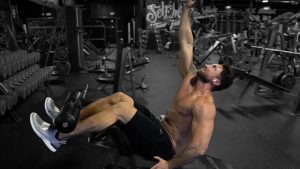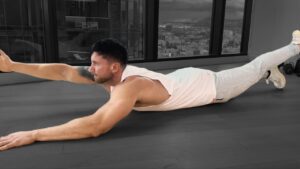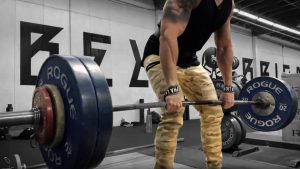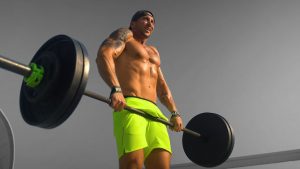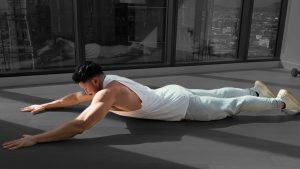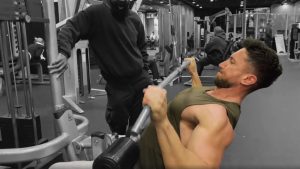The hanging knee raise exercise is a core movement that can be done while free-hanging from a bar or by being supported in a Roman chair.
It's a challenging exercise that's been used in the early training of bodybuilders, gymnasts, fitness experts, and athletes for over 100 years.
The trick to proper hanging knee raise form is balancing the body so that gravity doesn't work against you while you train.
Benefits of Adding Hanging Knee Raises To Your Training
All you need is a sturdy pull-up bar to start doing the hanging knee raise, but how important is it to your fitness routine? Here are just a few of the key benefits of doing hanging knee raises to increase strength in your lower abs, and chest.
Build Your Abdominals
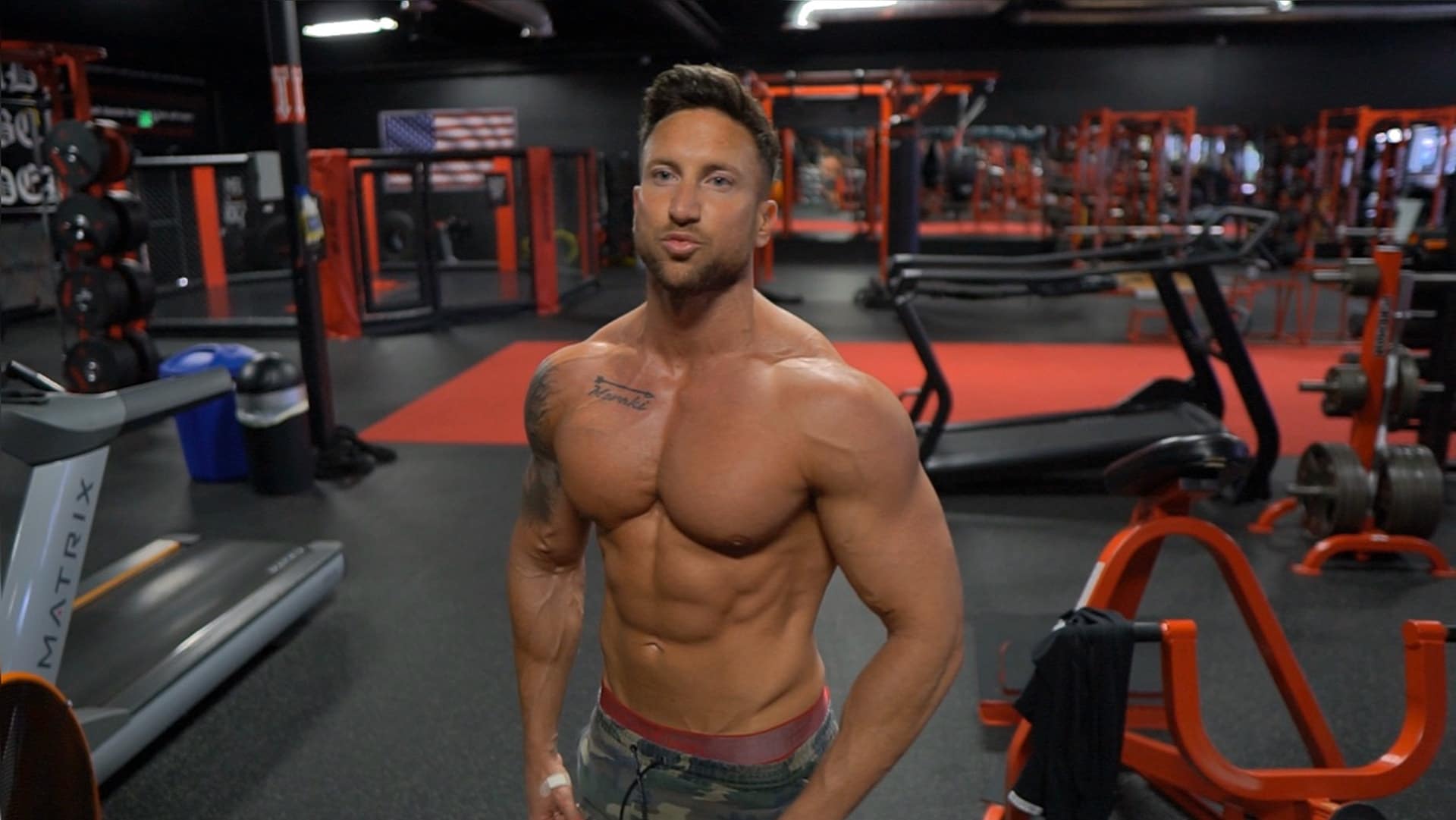
First off, there's a difference between your abdominals and your "core." Abs are the muscles that are visible on the outside of the body such as the stomach and the back. The core is the entire center of the body and includes the muscles that help hold up the torso and support the spine.
Doing sets of crunches is great for working on your lower abs. However, sets of crunches alone will do very little to build complete abs. You need to work on your core in general to get a six-pack. Hanging knee raises target your whole midsection, building abdominal strength to achieve desirable muscle tone.
Improve Your Stability
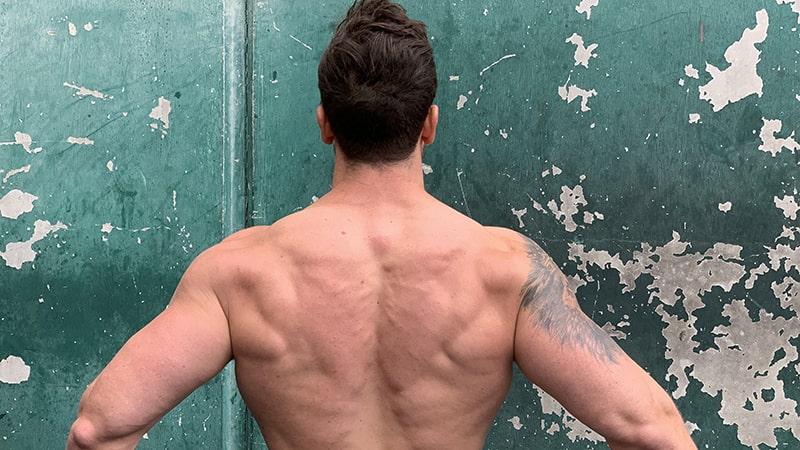
Midline stability is about being able to keep the core stable and connected to the lower back and hips. If you're a lifter with midline instability, you'll be more susceptible to rotational forces in your lower back.
The hanging knee raise is a great routine because it works the stabilizing muscles in the back, the abdominals, and the hamstrings. As a result, knee raises can help to prevent injuries in the back and the hips.
Better Bracing
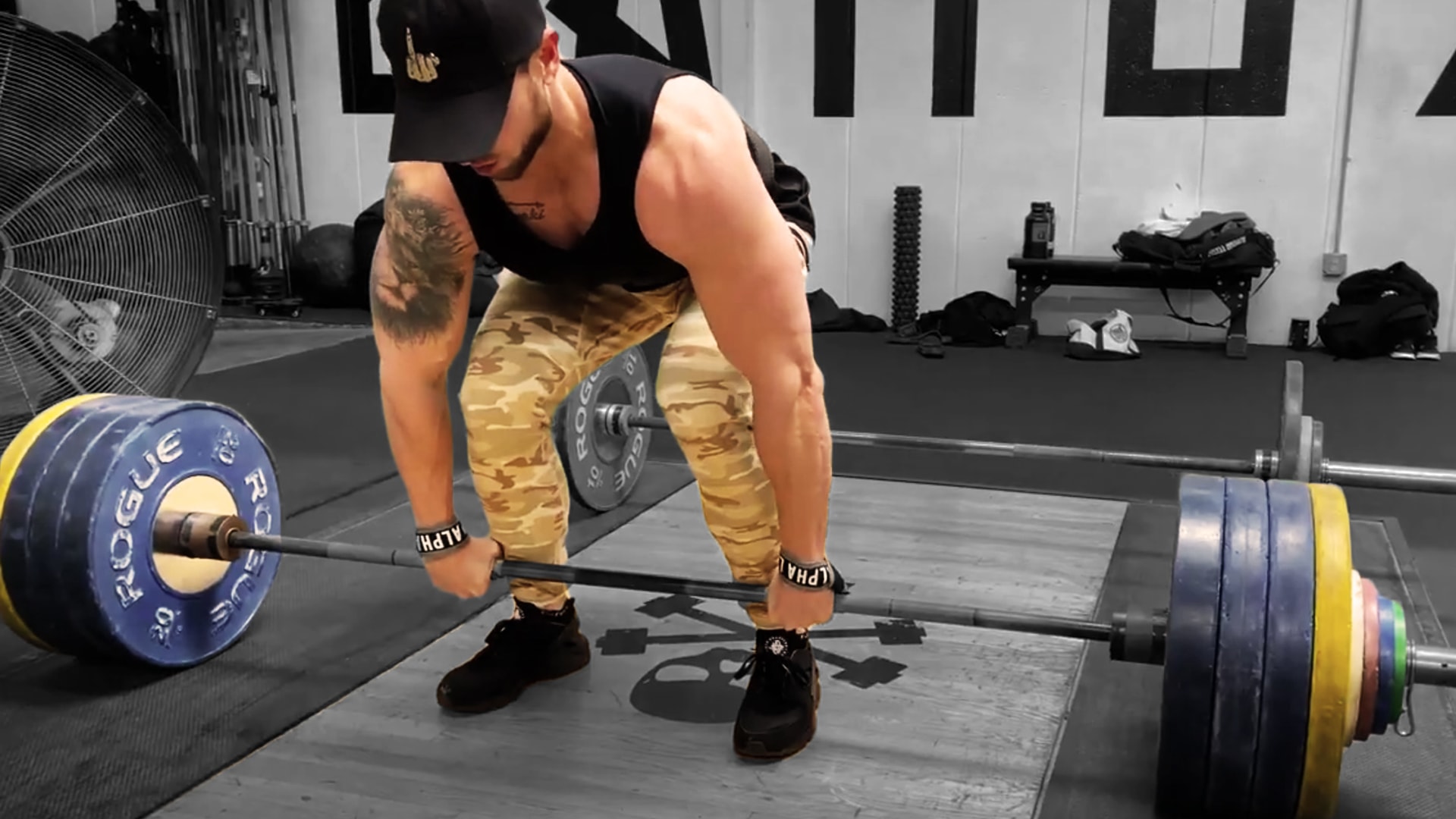
Bracing is the act of stabilizing the body as you squat, pull, or lift. Bracing is performed by engaging the core and bracing out the spine.
To increase the strength of the posterior chain, you need to develop your diaphragm. When you are lifting, your diaphragm is the key muscle in the core of your body that is responsible for stabilizing the spine and controlling rotation and flexion.
Hanging knee raises are one of the best exercises you can do for strengthening your core and abdominal muscles to brace better for your lifts.
Develop Gymnastic Fundamentals
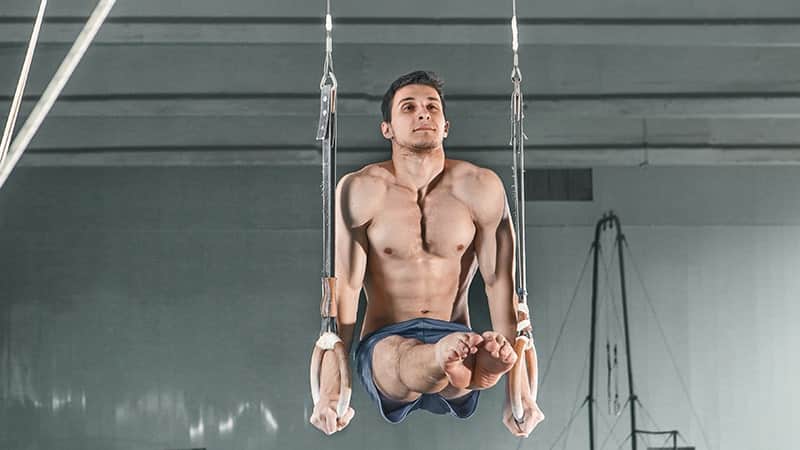
The hollow rock, plank, sit-up, and hanging knee raise are all movement types that are involved in gymnastic and calisthenic fitness. Hanging and dynamic strength training sets are a great way to build strength and mobility in your torso.
When performing these sets, it’s important to work on contracting and control the intercostal muscles while in a hanging and dynamic starting position.
Hanging leg raises and dynamic movements aren't just important for gymnastics and CrossFit, but they're also essential for every other sport that involves the use of the upper body.
If you’re a gymnast, you’ll want to keep your legs as strong as possible, and the hanging knee raise is a great way to strengthen your muscles and keep your hips healthy.
Reinforce Other Workouts
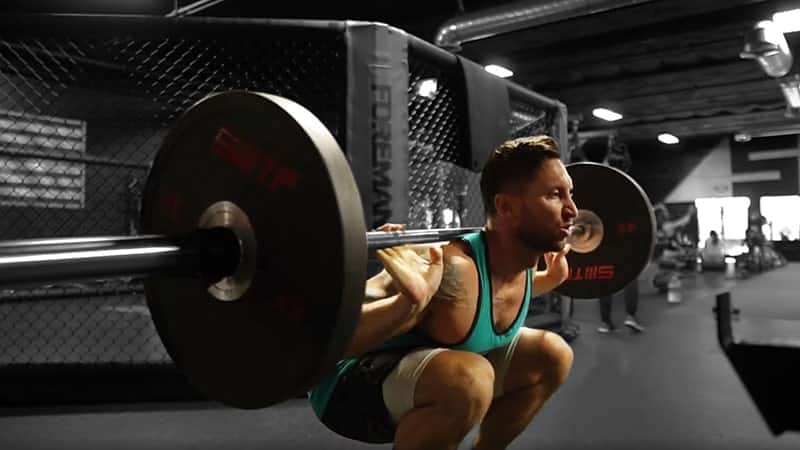
The hanging knee raise is a great progression exercise for the toes to bar, L-sit, and other more advanced abdominal exercises.
A hanging knee raise allows you to use gravity as a force multiplier to build your strength and stability in your deeper abdominal muscles. While hanging, your lower body is completely isolated from the ground and there is no load on your knees or legs.
Overhead support, back, overhand grip strength, and ab development are crucial for your overall performance in a workout. Whether you’re involved in a functional fitness sport or gymnastics, you’ll perform better if you have the proper form and technique when it comes to this movement.
This is a great exercise for improving your range of motion, coordination, and strength. The hanging knee raise is very similar to the squat in terms of muscle recruitment and movement patterns and can be very useful for developing the deep stabilizer muscles of the knees, hips, and glutes.
Muscles You'll Hit By Doing Free-Hanging Knee Raises
Forearms and Overhand Grip Strength
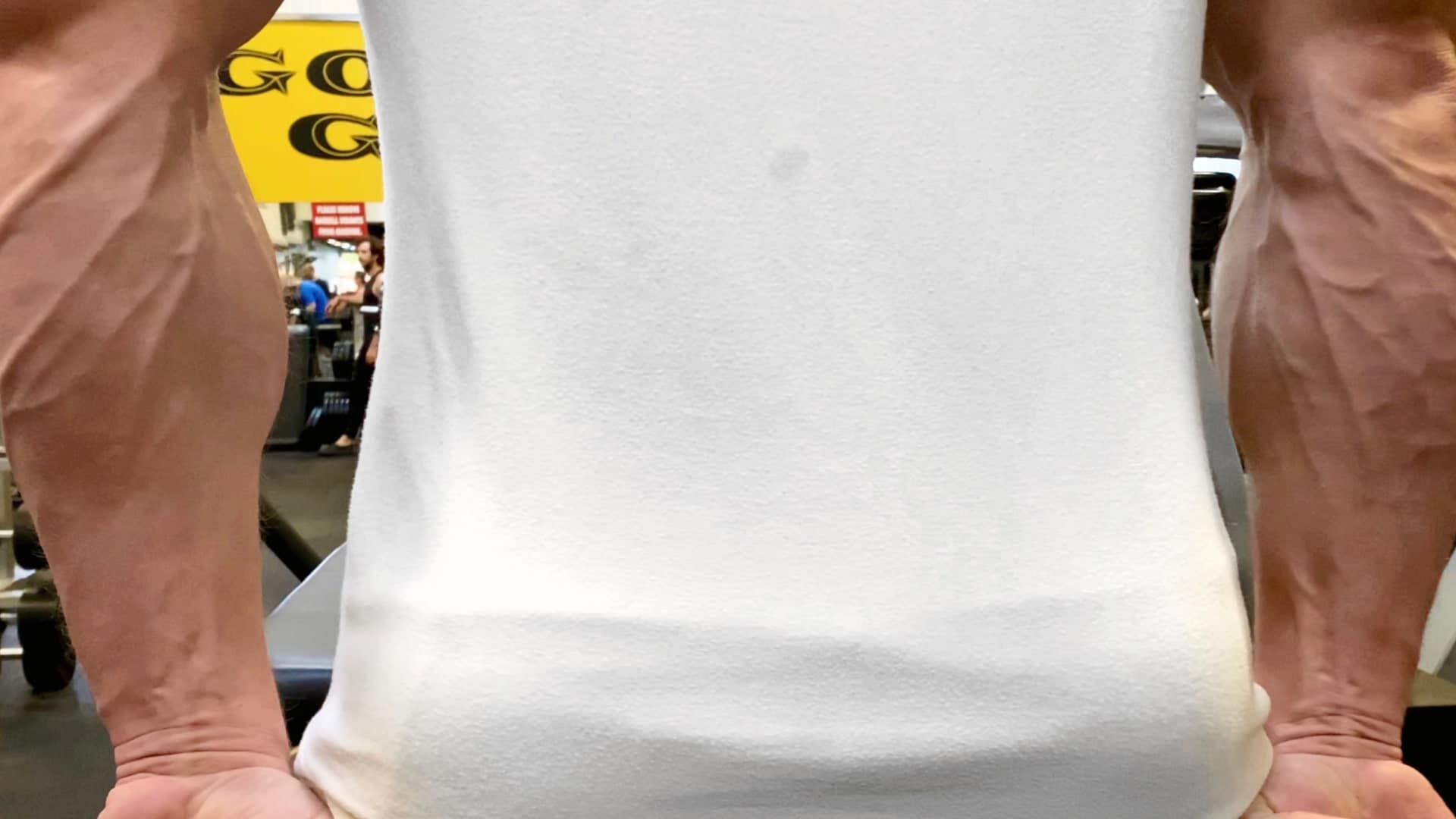
One of the most underused exercises for overhand grip strength is the free-hanging knee raise from a bar. The bench press provides a bigger challenge for the muscles in your upper body, but if you increase your grip strength, you'll be able to change up your routine to make it harder.
Hip Flexors
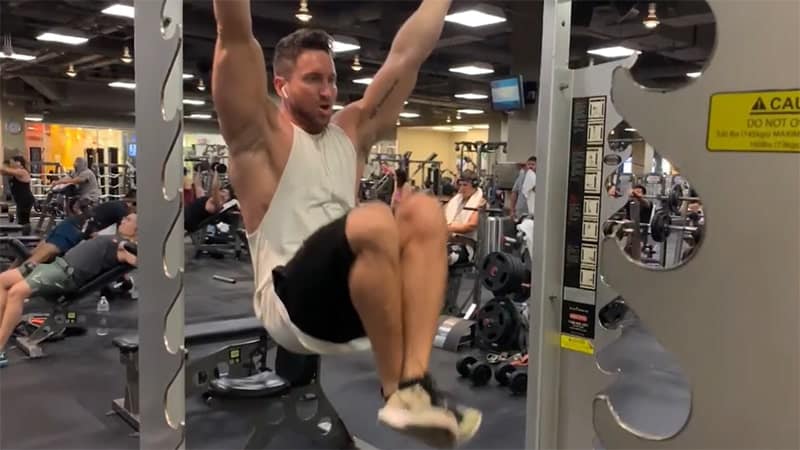
The hip flexors play an important part in creating hip flexion and knee extension. The hip flexors are responsible for straightening the legs for forward movement, and for extending the legs at the same time for backward movement.
Obliques
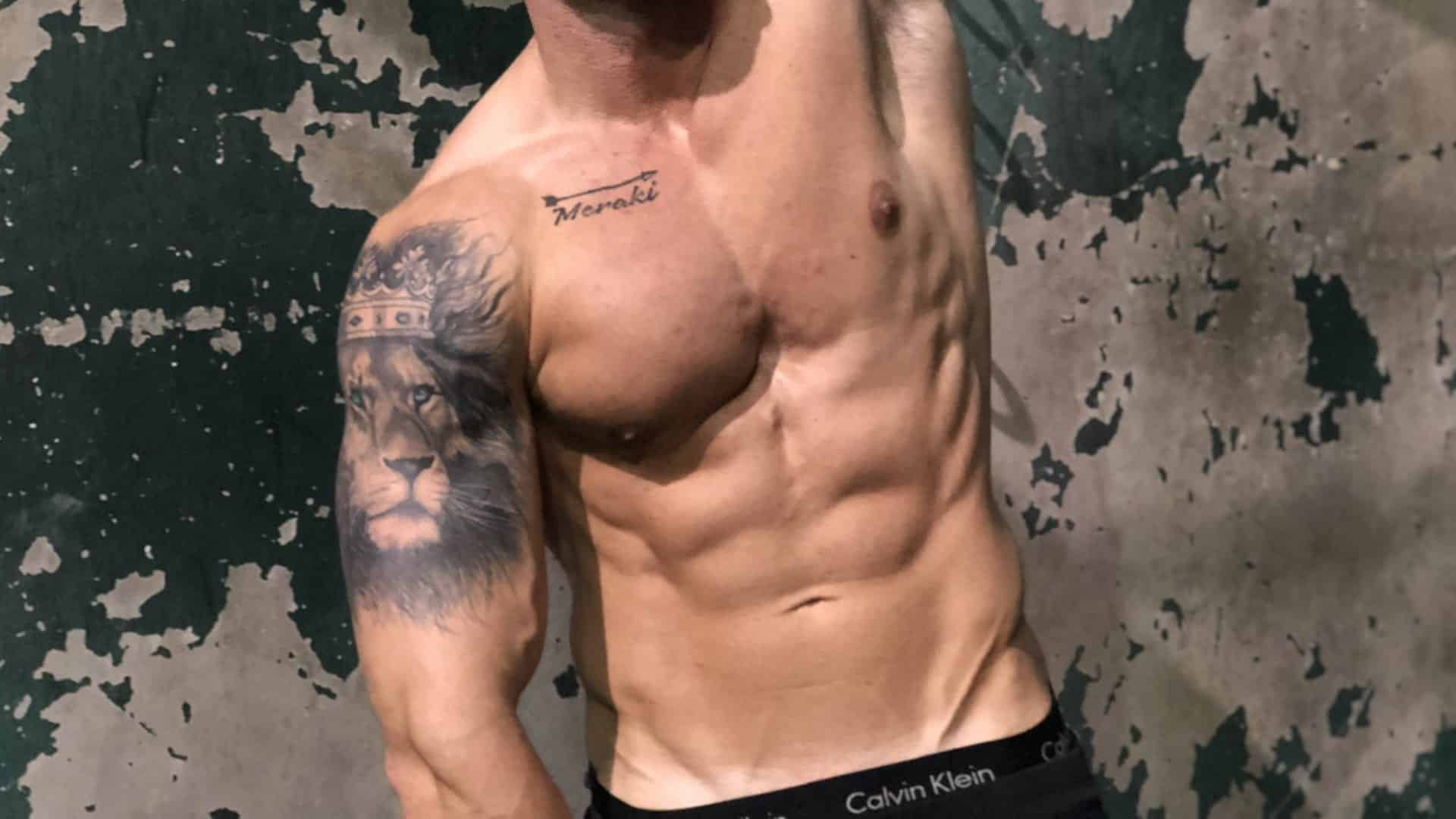
The obliques are a lot more than just the muscles that run along the sides of the spine. They’re also the muscles that run between the ribs and at the bottom of the ribcage. When these muscles contract, the movement raises the ribcage and lowers the hips.
The obliques are often neglected in training but are vital to a strong core. With a strong core, you’ll have better posture, healthier breathing, and better balance. If you want to get an amazing six-pack, then you’ll need to have strong obliques.
Rectus Abdominis
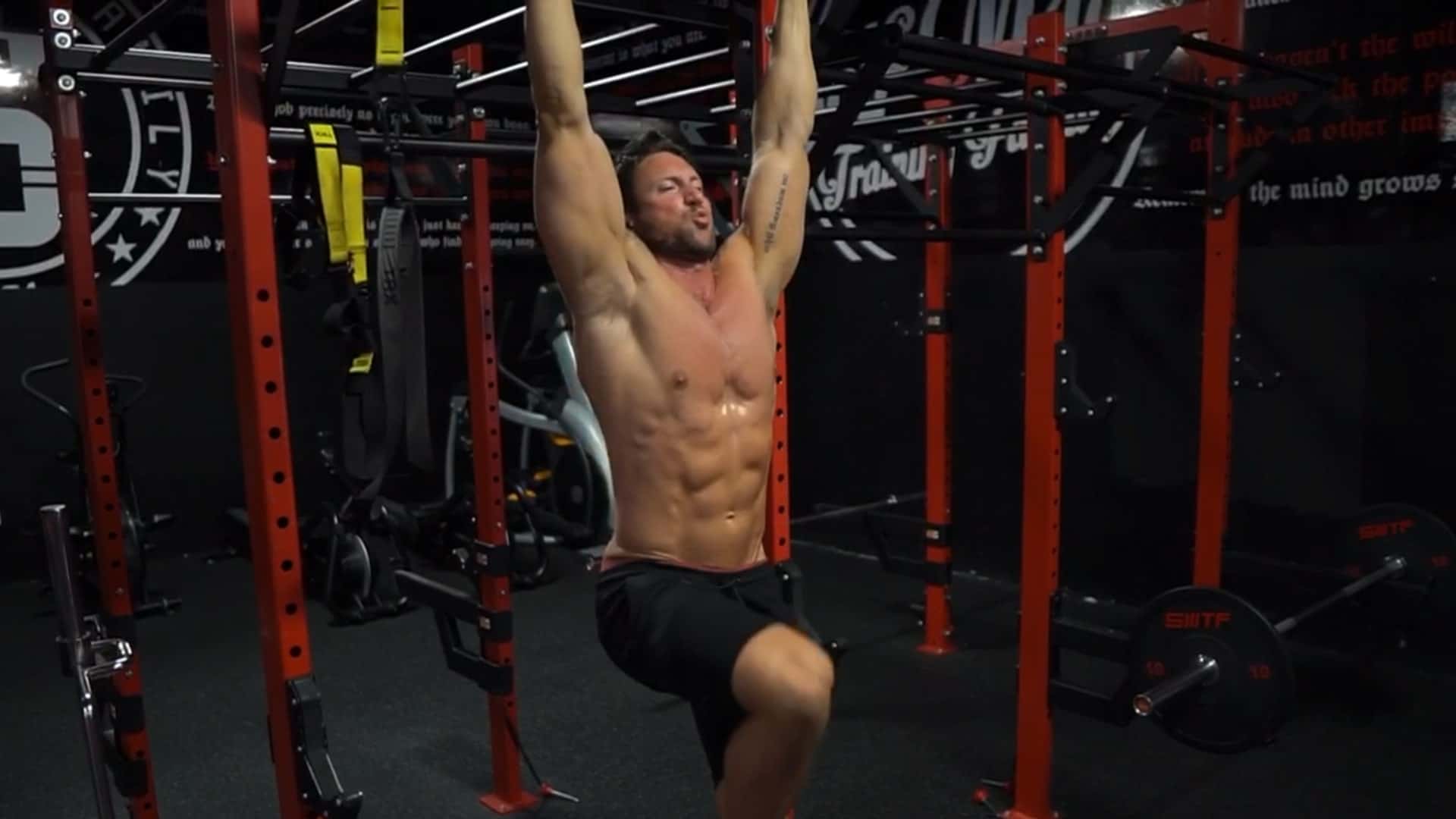
The rectus abdominis is the muscle that runs horizontally across the front of your abs. It’s also the muscle that helps you to sit up straight. The rectus abdominis plays a major role in the stabilization of the spine, and it’s also an important muscle when it comes to breathing.
Other primary muscles targeted when doing the hanging knee raise include the quadriceps, hamstrings, gluteals, and trapezius. The quadriceps are the muscles of the front of the thighs and the hamstrings and gluteals are the muscles of the calves and buttocks.
How To Perform The Hanging Knee Raise
Most recreational gym-goers have a tendency to under-emphasize the posterior chain and the posterior muscles in general, which is why we recommend people perform a lot of hanging knee raises. When you perform hanging knee raises, your posterior chain gets a lot of work because you have to actively pull your knees up towards your chest.
The key to performing an exercise correctly is to ensure that you have the right amount of resistance. The best way to do this is to balance the body so that gravity doesn't work against you. When you have the right amount of resistance, you can perform an exercise correctly without struggling.
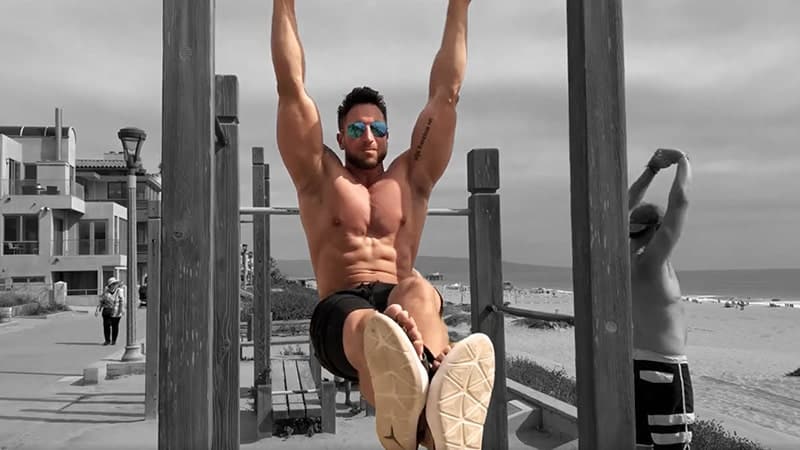
Hang from rings or a pull-up bar with your arms straight at shoulder-width and grip with your palms facing forward from the bar. Raise your legs, keeping your knees together, until your thighs are parallel with the floor. Lower slowly under control. That's one rep.
Aim to do as many reps as you can in 30-60 seconds with one minute of rest in between sets. Five sets 4-5 days a week will put you on the path to a better-looking belly with more strength in your abdominals.
Hanging Knee Raise Variations
What most people don’t realize is that the hanging knee raise is great for the rest of the body, too. For example, it works your hamstrings, your quads, and your glutes, meaning you’ll get a great workout whether you’re doing it on its own or as part of a superset. They're also great for burning fat to lose weight.
The hanging knee raise is a great exercise in its own right because it targets your obliques and lower abs to help increase strength and keep them in shape. The hanging knee raise also acts as a great warm-up exercise to get the blood flowing to your knees and abs to prevent injury when you start adding weight lifting to your routine.
The overhand hanging knee raise is also a great exercise that is great for strengthening the arms and shoulders. This exercise can also be done with a bar on a wall or in a doorway if you don't have access to the gym.
These variations on the basic hanging knee raise help you isolate other muscles in your lower abs, back, chest, hip, and thighs.
Oblique Hanging Knee Raise
The obliques are the muscles that run down the side of your abdomen and are great for toning and slimming. You can feel them the most in the sides of your abdomen when you’re sitting.
You should have healthy and strong obliques to maintain a healthy posture when you’re sitting or standing. The obliques help to stabilize your spine and help you to twist your torso as well as to rotate your hips when you’re sitting or standing.
To do the oblique hanging knee raise, use the same technique as the basic hanging knee raise, but alternate the side you lift your knees up towards.
Hanging Knee Raise With Twists
The hanging knee twist works the obliques just like the hanging knee raise, but it also works the central core muscles and the glutes. This is a great exercise to add to your routine if you’re looking to lose more fat and build your core.
To perform a hanging knee twist exercise, you keep your knees raised throughout and slowly rotate them from one side to the other.
Hanging Leg Raise
The hanging knee raise is great as a workout on its own, but it can also be a way to get closer to the L-sit, or hanging leg raises.
You'll engage your abs and lift your legs straight until they're at 90° with your torso. Hold for as long as you can. Then lower them back down to the starting position.
You can incorporate both the hanging knee raise and the hanging leg raise into your training to get a more complete workout for your abdominals. Try reducing the reps you do of each one so you can use both exercises without fatiguing too quickly.

